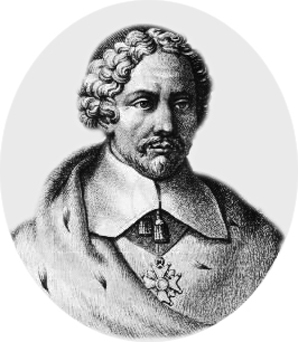- Joseph Pitton de Tournefort
Infobox Scientist
name = Joseph Pitton de Tournefort
box_width =
image_width =150px
caption = Joseph Pitton de Tournefort
birth_date =5 June ,1656
birth_place =Aix-en-Provence
death_date =28 December ,1708
death_place =
residence =
citizenship =
nationality = French
ethnicity =
field =botany
work_institutions =
alma_mater =
doctoral_advisor =
doctoral_students =
known_for =genus
author_abbrev_bot =
author_abbrev_zoo =
influences =
influenced =Charles Plumier
prizes =
religion =
footnotes =
Joseph Pitton de Tournefort (5 June ,1656 —28 December ,1708 ) was a Frenchbotanist , notable as the first to make a clear definition of the concept ofgenus for plants.Biography
Tournefort was born in
Aix-en-Provence and studied at theJesuit convent there. It was intended that he enter theChurch , but the death of his father allowed him to follow his interest in botany. After two years collecting, he studied medicine atMontpellier , but was appointed professor of botany at theJardin des Plantes inParis in 1683. During this time he travelled throughWestern Europe , particularly thePyrenees , where he made extensive collections. Between 1700 and 1702 he travelled through the islands ofGreece and visitedConstantinople , the borders of theBlack Sea ,Armenia , and Georgia, collecting plants and undertaking other types of observations. He was accompanied by the German botanistAndreas Gundesheimer (1668-1715) and the artistClaude Aubriet (1651-1743). His description of this journey was published posthumously ("Relation d'un voyage du Levant"), he himself having been run over and killed by a carriage in Paris; the road on which he died now bears his name (Rue de Tournefort in the 5ème arrondissement).His principal work was the 1694 "Eléments de botanique, ou Méthode pour reconnaître les Plantes" (the Latin translation of it "Institutiones rei herbariae" was published twice in 1700 and 1719). Notable features include its description of
fungi , and the designation oflichen s as a separate group. Some of the classification offlowering plant s was traditional, for instance he grouped them into "tree s" and "herb s", but his use offlower characters was innovative. The work's most important contribution, however, was a clear distinction between genus andspecies . With the concept of the genus, Tournefort was able to cluster the 7,000 plant species he described into 700-plus genera, making classification easier, and preparing the way for Linnaeus. Linnaeus used many of the genus names and descriptions as defined by Tournefort.The word "
herbarium " also seems to have been an invention of Tournefort; previously herbaria had been called by a variety of names, such as "Hortus siccus".The botanist
Charles Plumier had been his pupil and accompanied him on his voyages.Works
* "Élémens de botanique", 1694
* "Histoire des plantes qui naissent aux environs de Paris", 1698
* "Institutiones rei herbariae, editio altera", 1700 and 1719 (Latin translation of "Élémens de botanique")
* "Relation d'un voyage du Levant", 1717
* "Traité de la matière médicale", 1717References
*cite book|first= Duane|last=Isely|title=One hundred and one botanists|publisher=Iowa State University Press|year= 1994|pages= pp. 71-73
ee also
*
Antoine de Jussieu
*Bernard de Jussieu
*Michel Adanson External links
* [http://edb.kulib.kyoto-u.ac.jp/exhibit-e/b06/b06cont.html KUL] Digital version of "Elemens de botanique ou methode pour connoitre les plantes" 1694-1695.
Wikimedia Foundation. 2010.
